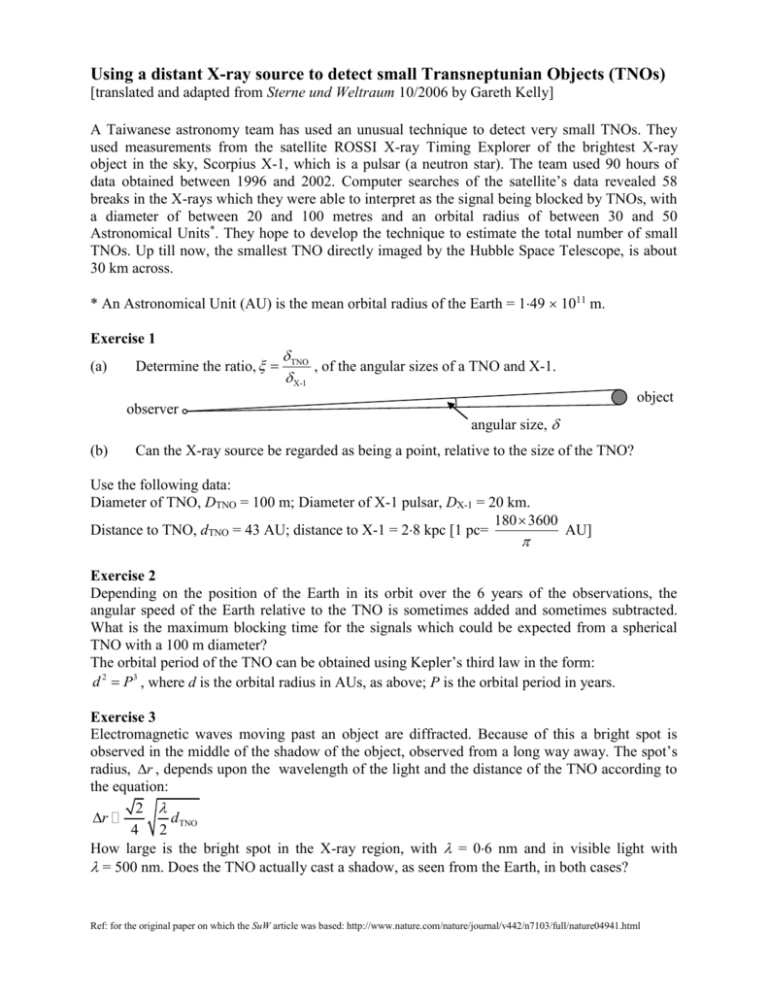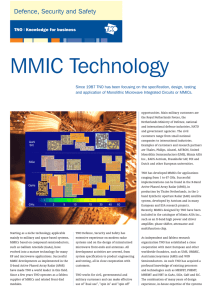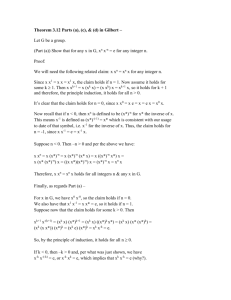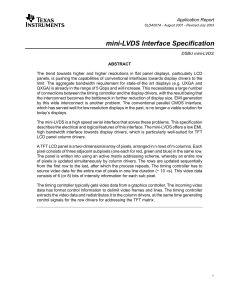TNOs - WJEC
advertisement

Using a distant X-ray source to detect small Transneptunian Objects (TNOs) [translated and adapted from Sterne und Weltraum 10/2006 by Gareth Kelly] A Taiwanese astronomy team has used an unusual technique to detect very small TNOs. They used measurements from the satellite ROSSI X-ray Timing Explorer of the brightest X-ray object in the sky, Scorpius X-1, which is a pulsar (a neutron star). The team used 90 hours of data obtained between 1996 and 2002. Computer searches of the satellite’s data revealed 58 breaks in the X-rays which they were able to interpret as the signal being blocked by TNOs, with a diameter of between 20 and 100 metres and an orbital radius of between 30 and 50 Astronomical Units*. They hope to develop the technique to estimate the total number of small TNOs. Up till now, the smallest TNO directly imaged by the Hubble Space Telescope, is about 30 km across. * An Astronomical Unit (AU) is the mean orbital radius of the Earth = 149 1011 m. Exercise 1 (a) Determine the ratio, observer (b) TNO , of the angular sizes of a TNO and X-1. X-1 object angular size, Can the X-ray source be regarded as being a point, relative to the size of the TNO? Use the following data: Diameter of TNO, DTNO = 100 m; Diameter of X-1 pulsar, DX-1 = 20 km. 180 3600 Distance to TNO, dTNO = 43 AU; distance to X-1 = 28 kpc [1 pc= AU] Exercise 2 Depending on the position of the Earth in its orbit over the 6 years of the observations, the angular speed of the Earth relative to the TNO is sometimes added and sometimes subtracted. What is the maximum blocking time for the signals which could be expected from a spherical TNO with a 100 m diameter? The orbital period of the TNO can be obtained using Kepler’s third law in the form: d 2 P3 , where d is the orbital radius in AUs, as above; P is the orbital period in years. Exercise 3 Electromagnetic waves moving past an object are diffracted. Because of this a bright spot is observed in the middle of the shadow of the object, observed from a long way away. The spot’s radius, r , depends upon the wavelength of the light and the distance of the TNO according to the equation: 2 r dTNO 4 2 How large is the bright spot in the X-ray region, with = 06 nm and in visible light with = 500 nm. Does the TNO actually cast a shadow, as seen from the Earth, in both cases? Ref: for the original paper on which the SuW article was based: http://www.nature.com/nature/journal/v442/n7103/full/nature04941.html Examples of data from occultation events 58 dip events with random probability lower than 10-3 were found Ref: for the original paper on which the SuW article was based: http://www.nature.com/nature/journal/v442/n7103/full/nature04941.html











